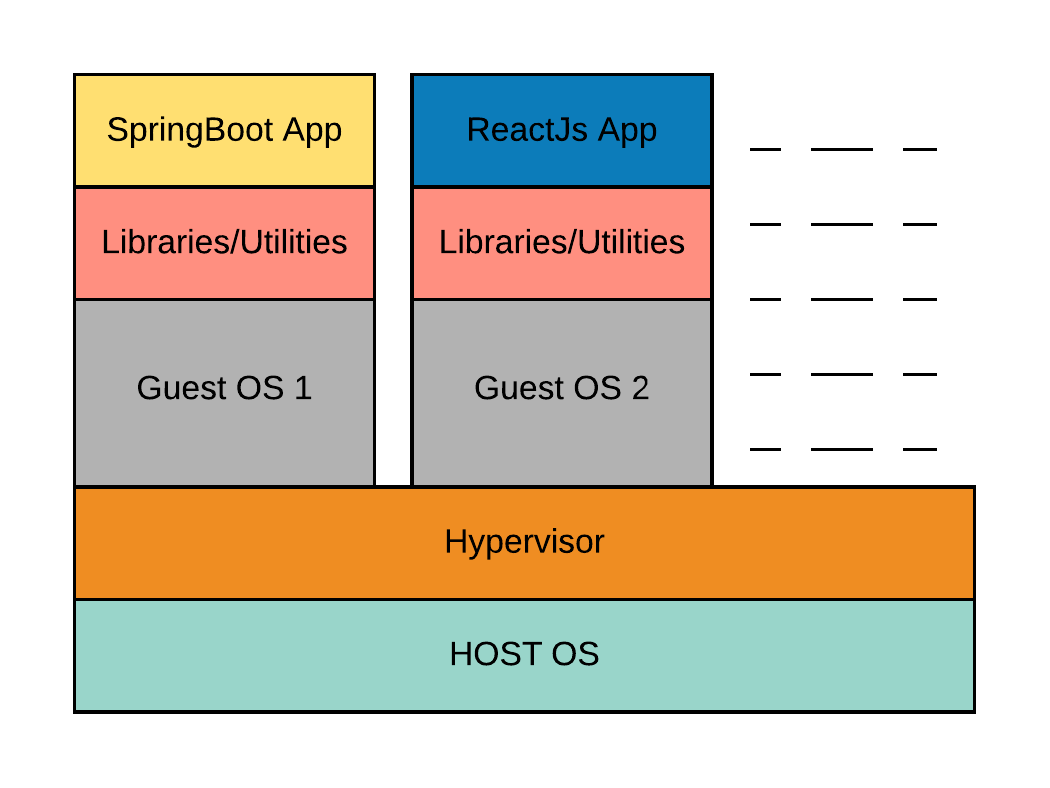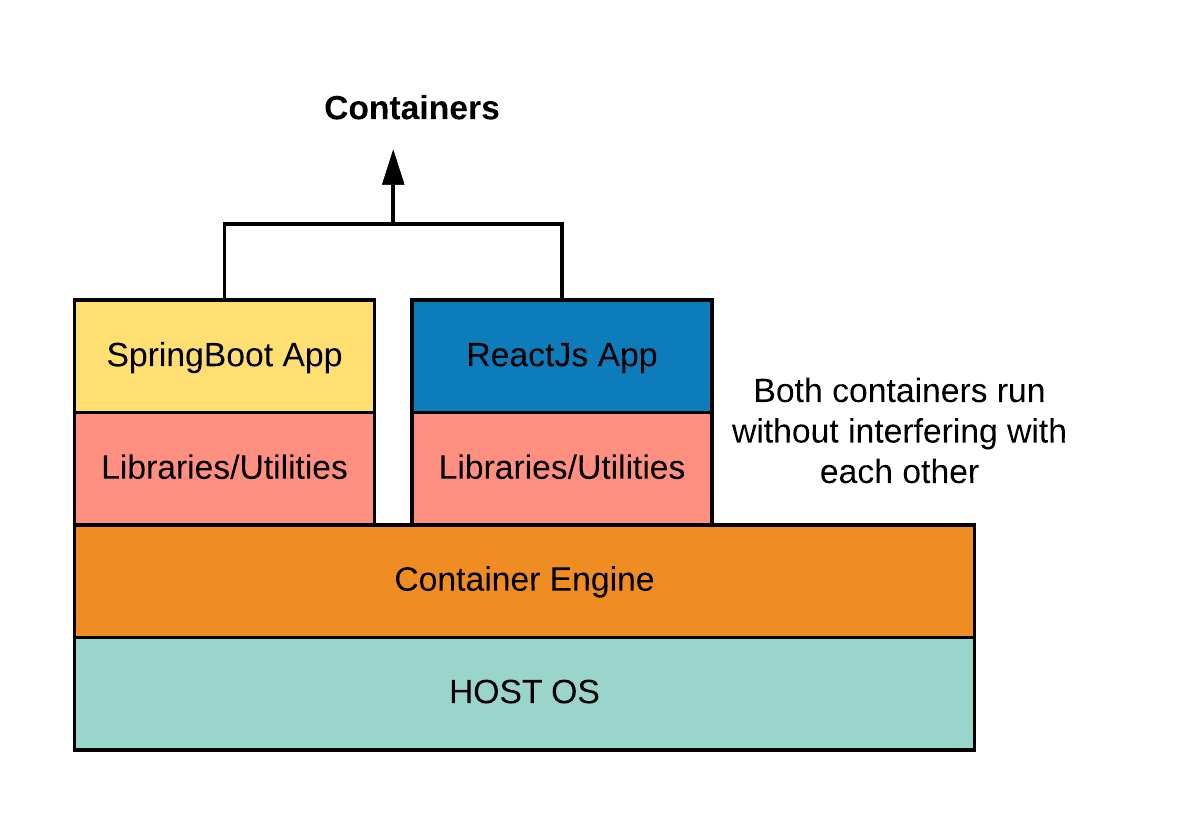Before we start talking about docker, we need to understand the problem which is solved by Docker efficiently and economically. Before Docker gained popularity, Companies used to use virtualization for running multiple applications as the different applications might need different sets of libraries and OS to run.
Why do organizations prefer virtual machines instead of provisioning actual servers to host their applications?
- **Better response time. **Virtualization can improve application performance, and the provisioning of virtual machines takes only minutes, rather than weeks. At progressed levels of implementation, self-provisioning by users is even possible.
- **Improved application availability. **When physical servers have problems, need routine maintenance, or require upgrades, the result is costly downtime. With virtual servers, applications can be readily moved between hosts to keep everyone up and running.
- Virtualization allows for more efficient use of IT equipment and labor resources.

Virtual machines run on a host machine using the hypervisor. A hypervisor (or virtual machine monitor, VMM, virtualizer) is computer software, firmware or hardware that creates and runs virtual machines. A computer on which a hypervisor runs one or more virtual machines is called a host machine, and each virtual machine is called a guest machine
Virtualization also has some shortcomings. Suppose, we need to deploy one application that requires a different OS with a set of configurations. It requires us to provision a new guest OS in order to run the application. Also, Running multiple Virtual Machines in the same host operating system leads to performance degradation. This is because of the guest OS running on top of the host OS, which will have its own kernel and set of libraries and dependencies. This takes up a large chunk of system resources, i.e. hard disk, processor, and especially RAM. Boot up process is also a long process that takes a minute time to boot up which becomes critical in case of real-time applications. There is one more big issue with virtualization as it requires a fixed RAM size to allocate to a VM which leads to unused blocked memory of the host machine. This blocked memory cannot be allocated to a new VM. Here, Containerization comes to rescue us from all these shortcomings.
What is containerization?
Containerization is a technique to bring virtualization to the OS level. Containerization is much more efficient as it does not require guest OS. It uses the same host kernel to run the application. Now, Docker is a containerization platform that packages your application with all its required dependencies in a container to run seamlessly in any environment.

Containers run a host machine using the container engine.
The best part of Containerization is that it is very lightweight as compared to the heavy virtualization. It takes a fraction of seconds to start a new container on a machine. Resources are shared among all the containers to allow the maximum utilization.
#dockerfiles #containerization #docker #virtualization
